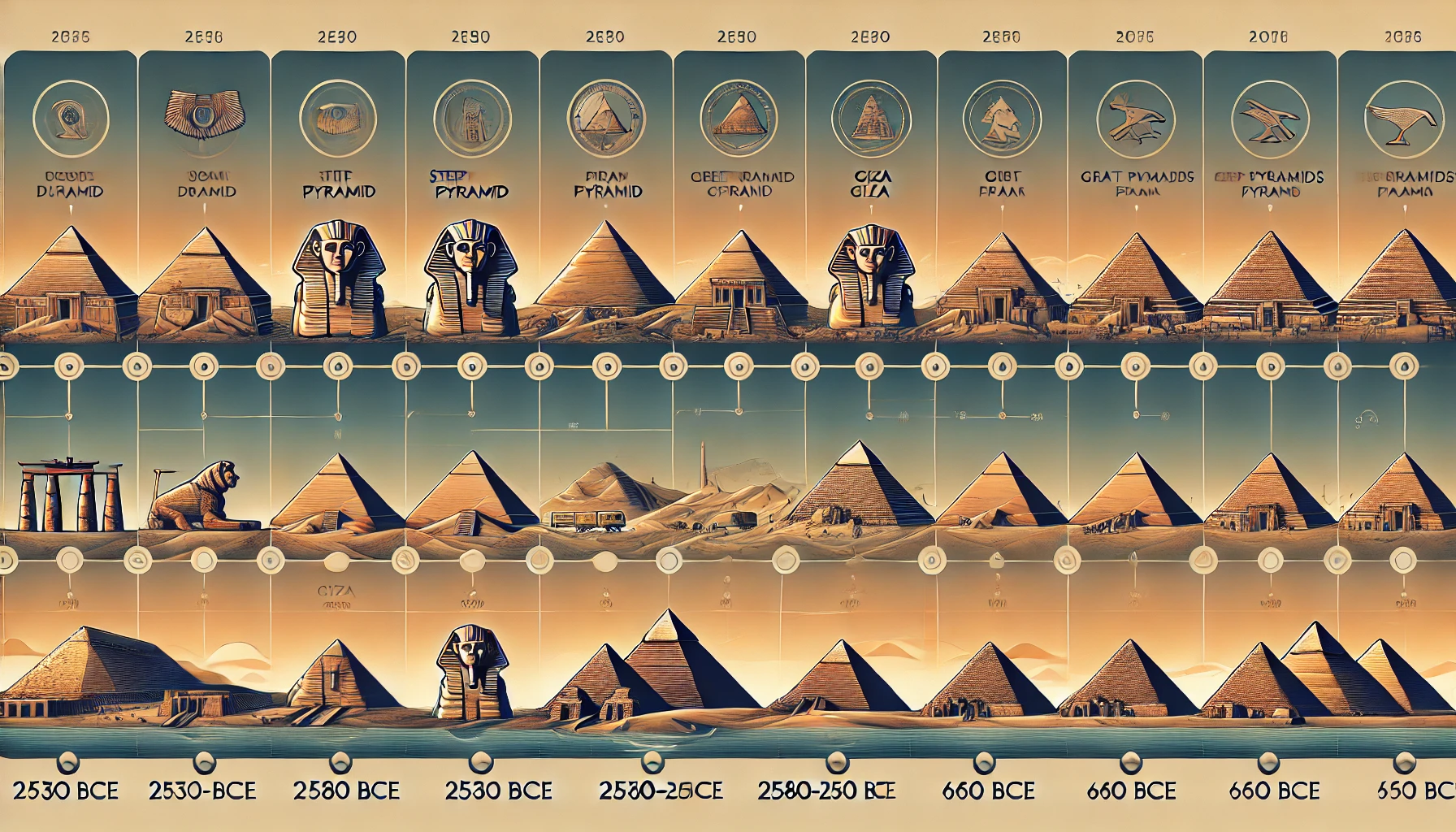The Pyramids age has long fascinated historians and archaeologists alike, as these monumental structures stand as a testament to the engineering prowess of ancient civilizations. Constructed predominantly during the Fourth Dynasty of the Old Kingdom, the pyramids served both as royal tombs and symbols of the pharaohs’ divine power. Recent discoveries and evolving theories continue to shed light on their origins, prompting deeper exploration into their significance within Ancient Egyptian society. Understanding the age of the pyramids not only allows us to trace their historical context but also unveils the cultural and technological advancements of the time.
The history of the pyramids and their construction dates
The Pyramids age spans several centuries, with the most iconic structures—The Great Pyramid of Giza—dating back to around 2580–2560 BC. This era marked the height of ancient Egyptian architectural and technological prowess.
Key Construction Dates:
- Djoser’s Step Pyramid: c. 2670 BC
- Great Pyramid of Giza: c. 2580–2560 BC
- Pyramid of Khafre: c. 2570 BC
- Pyramid of Menkaure: c. 2510 BC
These impressive monuments served not only as tombs for pharaohs but also as symbols of their divine power. Additionally, they reflect the Egyptians’ advanced understanding of engineering and mathematics during the Pyramids age.
Construction Techniques:
- Material Usage:
- Limestone for the core
- Granite for the casing
- Labor Force:
- Skilled laborers
- Seasonal workers from across Egypt
Overall, the Pyramids age showcases remarkable achievements that have continued to captivate historians and tourists alike. Their legacy remains as enduring as the stones from which they are built.
The Significance of the Pyramids in Ancient Egyptian Society
The pyramids age reflects more than just an architectural marvel; they symbolize the heart and soul of Ancient Egyptian civilization. These monumental structures served various vital functions within society:
- Tombs for Pharaohs: The primary role of the pyramids was to serve as elaborate burial sites for pharaohs, ensuring their safe passage to the afterlife.
- Cultural Identity: The pyramids reinforced the identity of Ancient Egyptians, showcasing their advanced engineering skills and commitment to their beliefs.
- Political Power: Building these colossal structures illustrated the pharaoh’s power and control. They signified wealth and resources, intending to inspire awe among both citizens and adversaries.
- Religious Significance: The pyramids aligned with astronomical events, reflecting the Egyptians’ understanding of the cosmos, thus serving religious purposes that connected their deities with the earthly realm.
In summary, the pyramids age not only marks their historical timeline but also emphasizes their crucial roles in religion, politics, and society, creating a lasting legacy that continues to captivate the world.
Recent Discoveries and Theories About the Age of the Pyramids
Recent research has shed new light on the Pyramids age, challenging traditional views and offering fascinating insights. Here are some key discoveries and theories:
- Radiocarbon Dating: While tools like radiocarbon dating are typically used for organic materials, recent applications in the study of ancient walls and sealant residues have provided estimates for the construction timeline.
- Historical Records: New translations of ancient texts have revealed more details about the reigns of Pharaohs who commissioned the pyramids, suggesting a more precise timeline for their construction.
- Geological Studies: Some theories suggest that changes in the Nile’s course may have influenced the construction period, positioning the Pyramids age between 2589 and 2504 B.C. for the Great Pyramid.
- Astronomical Alignments: Studies focusing on astronomical orientations indicate that the pyramids may have been aligned with specific celestial events, linking their construction to significant religious dates.
These discoveries continually reshape our understanding of the Pyramids age, making them not just monumental tombs, but key elements of ancient Egyptian culture and innovation.
Frequently Asked Questions
What is the approximate age of the Great Pyramid of Giza?
The Great Pyramid of Giza, also known as the Pyramid of Khufu, is estimated to be around 4,500 years old, having been completed around 2560 BCE. This makes it the oldest of the Three Pyramids of Giza and the largest of the Egyptian pyramids. It was built during the Fourth Dynasty of the Old Kingdom of Egypt and is the only surviving structure of the Seven Wonders of the Ancient World.
How were the ages of the pyramids determined?
The ages of the pyramids were determined through a combination of archaeological evidence, historical records, and radiocarbon dating methods. Archaeologists rely on inscriptions, burial artifacts, and historical documents that reference the construction period, alongside dating techniques applied to organic materials found within and around the pyramids. These methods help establish a timeline for when each pyramid was built.
Are there any pyramids older than the Great Pyramid of Giza?
Yes, there are pyramids older than the Great Pyramid of Giza. The Pyramid of Djoser, located in Saqqara, is one of the earliest significant stone structures in Egypt and dates back to the 27th century BCE, which makes it over 4,600 years old. This pyramid marks a pivotal development in Egyptian architecture, transitioning from step pyramids to the smooth-sided versions seen in later monuments.
What factors contributed to the longevity of the pyramids?
The longevity of the pyramids can be attributed to several key factors, including the materials used, the engineering techniques employed, and the purpose of these structures. Constructed primarily from durable limestone and granite, the pyramids were designed to withstand the wear of time. Their geometric shape also helps distribute weight evenly. Additionally, they served important religious and cultural functions as tombs, leading to efforts to maintain and protect them throughout Egyptian history.


